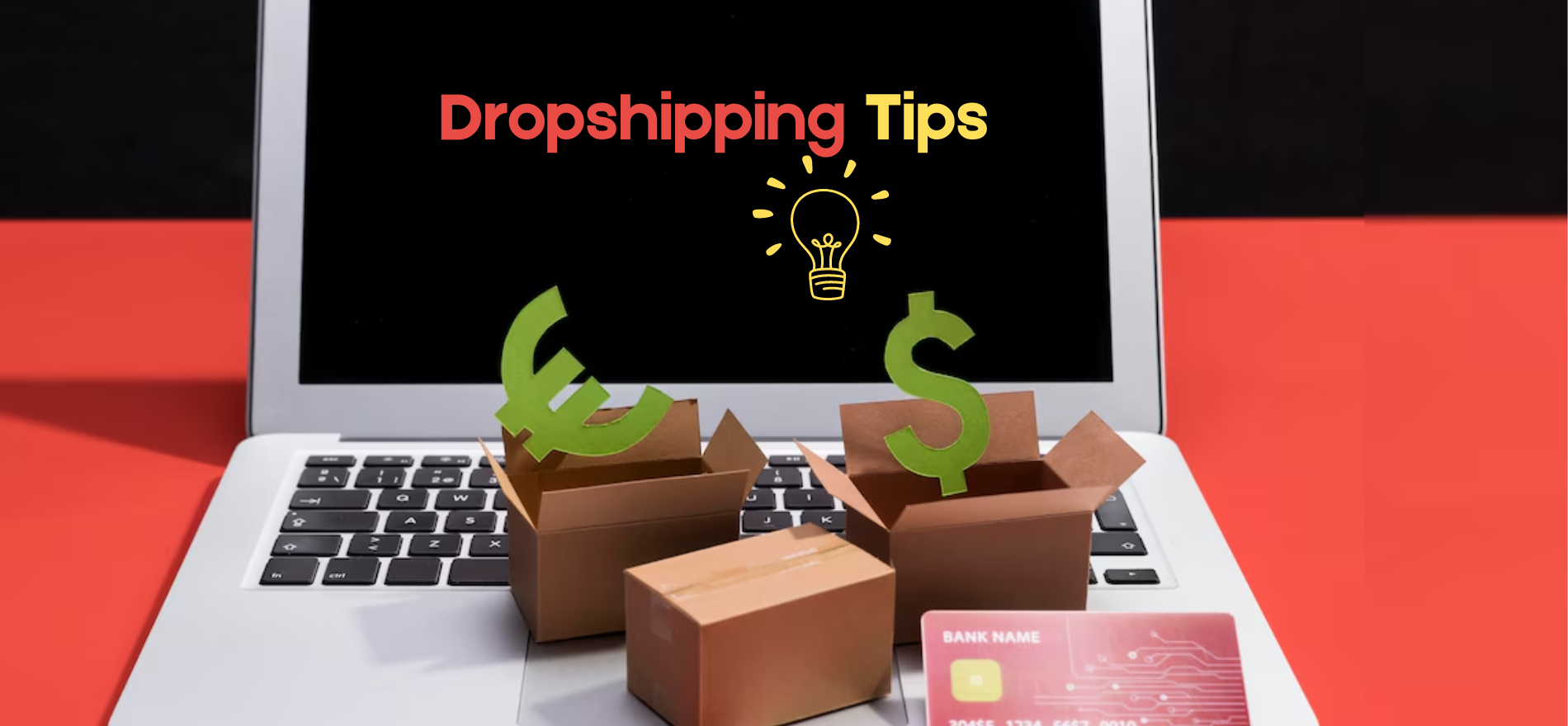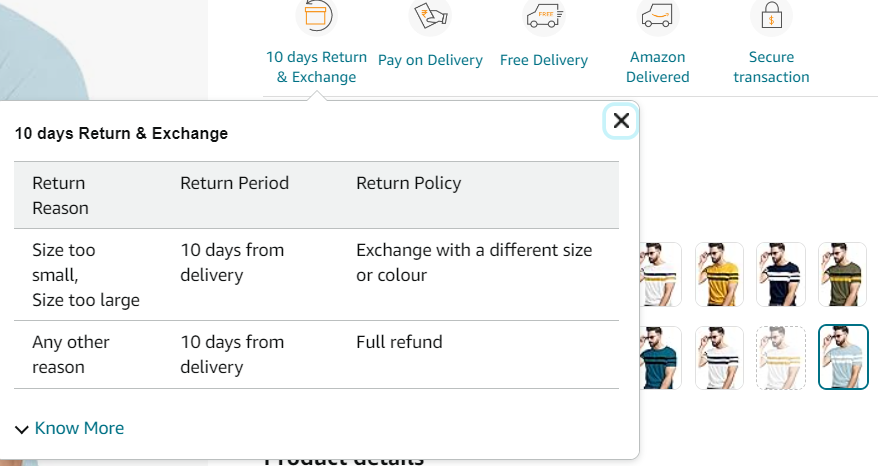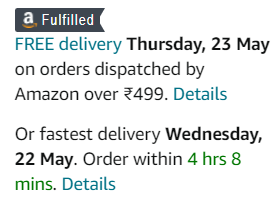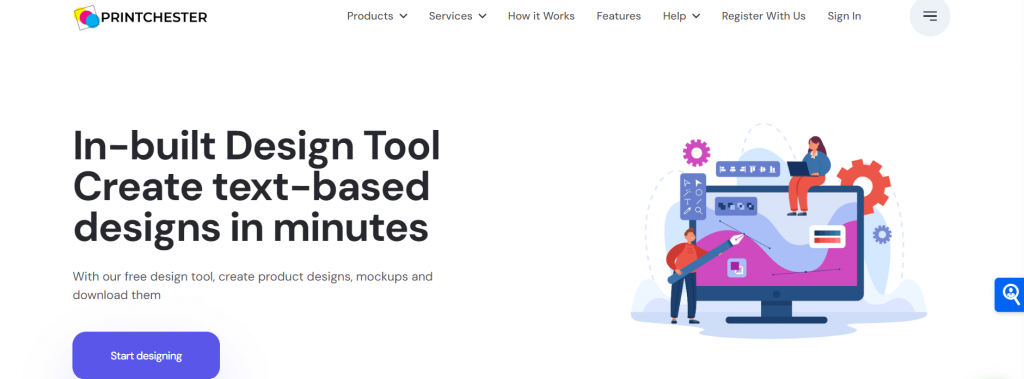Dominate Dropshipping in 2024: 10 Tips You Need to Know

In this comprehensive guide, we’ll delve into 10 essential dropshipping tips you need to know for 2024.
The world of e-commerce is booming, and dropshipping offers an exciting way to enter this dynamic market. It allows you to launch your online store without carrying physical inventory, making it a low-risk and accessible business model.
However, success in dropshipping requires more than just finding trendy products. To truly thrive, you need a strategic approach that prioritizes customer experience, operational efficiency, and effective marketing.
By implementing the below strategies, you can build a robust dropshipping business that stands out from the competition.
Let’s get started.
Dropshipping Tips in 2024
1. Own Your Dropshipper’s / Suppliers Mistakes
Let’s face it, mistakes happen. Even the most reliable dropshipping suppliers can occasionally slip up. When this occurs, it’s crucial to take ownership of the situation and prioritize clear communication with your customers.
Here’s how to handle supplier mistakes effectively:

- Prompt Notification: As soon as you learn of an error, promptly inform your customer. Transparency builds trust and demonstrates that you care about their experience. Explain the situation honestly and apologize for any inconvenience caused.
- Offer Solutions: Propose solutions to rectify the issue. This could involve expediting replacements, offering discounts on future purchases, or providing a full refund. The specific solution will depend on the nature of the mistake and the customer’s preference.
- Stay Updated: Keep your customers informed about the resolution process. Provide regular updates on the status of their replacement order, refund, or any other corrective action being taken. This prevents frustration and shows your commitment to resolving the situation promptly and effectively.
2. Manage Your Inventory Levels Like a Pro: Avoiding Stockouts and Overstocking
Inventory management is a cornerstone of dropshipping success. While your supplier holds the physical inventory, it’s your responsibility to monitor stock levels closely. This ensures you can accurately reflect product availability on your website and avoid stockouts that disappoint customers. Additionally, you want to avoid overstocking on products that may not sell well, which can tie up your capital and limit your ability to invest in more promising inventory.
Here are some tips for optimal inventory management:
- Track Supplier Updates: Regularly check your supplier’s inventory levels and update your store accordingly. Consider integrating your store with your supplier’s inventory management system for real-time stock level visibility. This eliminates the risk of displaying products that are out of stock and ensures a smooth customer experience.
- Set Minimum Order Quantities:

Establish minimum order quantities to avoid dropshipping fees for very small orders. Negotiate bulk discounts with your supplier if possible to reduce per-unit costs. This can help you maintain healthy profit margins while offering competitive prices to your customers.
- Analyze Sales Trends: Monitor sales data to identify popular products and adjust stock levels based on demand. Utilize sales forecasting tools to anticipate future demand trends and prevent stockouts during peak seasons. By proactively managing your inventory, you can ensure you have the right products in stock to meet customer needs and avoid stockouts that can damage your reputation.
- Handling Out-of-Stock Orders: Develop a clear communication strategy for out-of-stock situations. Inform customers promptly about any unavailable items and offer alternative solutions. This could involve suggesting similar products, providing pre-order options, or offering a full refund. By being transparent and proactive, you can minimize customer frustration and maintain positive relationships.
3. Streamlining the Dropshipping Process Fulfill Orders Intelligently
Order fulfillment is the backbone of your dropshipping business. It’s the process of receiving customer orders, transmitting them to your supplier, and ensuring the products are delivered to your customers efficiently and accurately. Streamlining this process ensures timely deliveries and happy customers.
Here are some strategies to optimize order fulfillment:

- Automated Order Processing: Utilize dropshipping platforms with automated order processing features to minimize manual tasks and errors. This frees up your time to focus on other aspects of your business, such as marketing and customer service. Look for platforms that integrate seamlessly with your online store and your supplier’s system for a smooth order fulfillment workflow.
- Clear Order Instructions: Provide detailed instructions to your supplier, including accurate customer information, any specific packaging requirements, and branding preferences. Clear instructions minimize fulfillment errors and ensure your customers receive their orders exactly as expected. This includes specifying any special handling instructions for fragile items or gift wrapping requests.
- Quality Control Measures: Consider implementing quality checks on products before they ship to your customers. This minimizes the risk of receiving damaged or faulty items, reducing returns and customer dissatisfaction. Partner with a reliable supplier who offers quality control measures to ensure you’re receiving high-quality products that meet your customers’ expectations. You can also negotiate with your supplier to include a packing slip with your branding to enhance the customer experience.
4. Implement Security Best Practices: Protecting Your Customers' Data

Security is paramount in e-commerce, and dropshipping is no exception. You’re entrusted with sensitive customer information, such as credit card details and billing addresses. Implementing robust security measures is essential to protect your customers’ data and maintain their trust.
Here are some security best practices to follow:
- Secure Payment Gateway: Choose a reputable payment gateway that adheres to industry-standard security protocols. Look for features like PCI compliance and SSL encryption to safeguard sensitive financial information during transactions.
- HTTPS Encryption: Ensure your website uses HTTPS encryption to encrypt data transmission between your website and your customers’ browsers. This protects data from being intercepted by unauthorized parties.
- Regular Security Audits: Conduct regular security audits to identify and address any vulnerabilities in your website and systems. Partner with a reputable security firm to conduct these audits for a comprehensive assessment.
- Customer Data Privacy: Develop a clear and concise privacy policy that outlines how you collect, store, and use customer data. Be transparent about how you protect their information and comply with all relevant data privacy regulations.
5. Handle Chargebacks Quickly and Effectively
Chargebacks occur when a customer disputes a credit card transaction with their bank. While they can be frustrating, handling them promptly and effectively can minimize financial losses and maintain good relationships with your payment processor.
Here’s how to address chargebacks efficiently:
- Clear Return Policy: Have a clear and easily accessible return policy on your website. This policy should outline the timeframe for returns, acceptable reasons for returns, and any restocking fees that may apply. A well-defined return policy can help prevent unnecessary chargebacks.
- Investigate Promptly: As soon as you receive notification of a chargeback, investigate the issue promptly. Review the customer’s communication and try to understand the reason for the dispute.
- Respond Professionally: Communicate with the customer in a professional and courteous manner. Provide any relevant documentation or order details to support your case. Sometimes, a simple explanation or reminder of their purchase can resolve the issue.
- Work with Your Payment Processor: Collaborate with your payment processor to gather evidence and respond to the chargeback. Payment processors have specific procedures for handling chargebacks, and following their guidelines will increase your chances of a successful resolution.
6. Write an Effective Return Policy: Building Trust and Minimizing Disputes
A well-crafted return policy is a crucial element for any dropshipping business. It fosters trust with your customers and clarifies your expectations for returns. This can help minimize disputes and chargebacks, ultimately saving you time and money.
Here’s how to create an effective return policy:

- Clear and Accessible: Make your return policy readily available on your website. Include it in your footer menu, on your product pages, and during the checkout process. Ensure it’s written in clear and concise language that’s easy for customers to understand.
- Define Return Window: Specify the timeframe for eligible returns. A standard return window is typically 30 days from the date of purchase, but you can adjust this based on your preferences and industry norms.
- Acceptable Reasons for Returns: Outline the reasons for which you’ll accept returns. This could include damaged or defective items, incorrect items sent, or unworn clothing that doesn’t fit as expected. Be clear about any exclusions, such as personalized items or perishable goods.
- Restocking Fees (Optional): Consider implementing a restocking fee for non-faulty returns. This fee helps offset your costs associated with processing the return, such as repackaging and restocking in your supplier’s warehouse. However, be mindful that restocking fees can sometimes deter customers from making purchases, so weigh the pros and cons before implementing this option.
- Return Process: Clearly explain the steps involved in returning an item. This might include instructions on contacting customer service, obtaining a return authorization number (RMA), and properly packaging the item for return shipment.
By providing a transparent and customer-friendly return policy, you demonstrate your commitment to customer satisfaction and build trust with your audience.
7. Adopt Simple Shipping Rules: Setting Clear Expectations
Shipping is a significant factor influencing customer experience in dropshipping. Clear and straightforward shipping rules set expectations and minimize confusion.

- Offer Multiple Shipping Options: Provide your customers with a few different shipping options at checkout. This could include standard shipping, expedited shipping, and potentially even free shipping for orders above a certain threshold.
- Transparent Shipping Costs: Clearly display the shipping cost for each option during checkout. Consider offering free shipping promotions to incentivize purchases, but ensure the cost is factored into your product pricing to maintain profitability.
- Estimated Delivery Times: Provide realistic estimated delivery times for each shipping option. Base these estimates on your supplier’s shipping timelines and factor in potential delays. It’s always better to under-promise and over-deliver when it comes to delivery times.
- Clear Returns Policy Integration: Ensure your return policy integrates seamlessly with your shipping rules. Specify who is responsible for return shipping costs (customer vs. seller) under different scenarios, such as damaged items or change of mind returns.
8. Provide Great Customer Support: Building Long-Term Relationships
Customer support is the backbone of any successful e-commerce business. It’s the touchpoint where you build relationships with your customers, address their concerns, and ultimately turn them into loyal brand advocates.
Here are some key strategies to deliver exceptional customer support:
- Multiple Support Channels: Offer a variety of ways for customers to reach your support team. This could include email, live chat, phone support (consider this for the future as your business grows), and even a social media support channel.
- Responsive and Knowledgeable Staff: Ensure your customer support team is responsive and knowledgeable about your products, policies, and the dropshipping process. Provide them with the resources and training they need to effectively address customer inquiries and resolve issues promptly.
- Personalized Interactions: Strive for personalized interactions with your customers. Use their names, empathize with their concerns, and go the extra mile to find solutions that leave them satisfied. A positive customer support experience can turn a one-time buyer into a loyal repeat customer.
- Proactive Communication: Keep your customers informed throughout the buying process. Send order confirmation emails, shipping notifications, and tracking information. Proactive communication builds trust and demonstrates that you care about their experience.
- Positive Attitude: Train your support team to maintain a positive attitude, even when dealing with frustrated customers. Active listening, empathy, and a willingness to help can often turn a negative situation into a positive one.
Investing in excellent customer support can significantly improve customer satisfaction, brand loyalty, and ultimately, your bottom line.
9. Consider Phone Support: Adding a Personal Touch
While email and live chat are essential support channels, adding phone support can provide a more personal touch and allow for more complex issue resolution. This can be especially valuable for building trust and rapport with your customers.
Here are some things to consider when offering phone support:
- Cost-Effectiveness: Evaluate the cost of implementing phone support and weigh it against the potential benefits for your business. Consider outsourcing phone support to a reputable call center if managing it in-house isn’t feasible.
- Availability: Determine the hours of operation for your phone support service. Align these hours with your target customer base and ensure sufficient staffing to handle call volume effectively.
- Integration with Other Channels: Integrate phone support with your other support channels. Offer customers the option to request a call back via email or live chat if phone lines are busy.
10. Focus on Marketing: Driving Traffic and Sales

Marketing is the lifeblood of any e-commerce business. It’s how you attract potential customers to your online store and convert them into paying customers. In dropshipping, effective marketing is crucial for generating sales and achieving profitability.
Here are some key marketing strategies to consider:
- Identify Your Target Audience: Define your ideal customer profile. Understanding their demographics, interests, and online behavior allows you to tailor your marketing messages to resonate with them.
- Content Marketing: Create valuable and engaging content that educates, entertains, and informs your target audience. This could include blog posts, social media content, infographics, or even video tutorials. Content marketing establishes you as a thought leader in your niche and builds trust with potential customers.
- Search Engine Optimization (SEO): Optimize your website and product listings for relevant keywords to improve your organic search ranking. This increases the visibility of your store in search engine results pages (SERPs) and drives qualified traffic to your site.
- Paid Advertising: Consider utilizing paid advertising platforms like Google Ads, Facebook Ads, or Instagram Ads to target your ideal customer base with laser precision. Paid advertising allows you to reach a wider audience and generate targeted traffic to your online store.
- Social Media Marketing: Leverage social media platforms to connect with your target audience, showcase your products, and build brand awareness. Run engaging social media campaigns, participate in relevant conversations, and encourage customer interaction.
- Email Marketing: Build an email list and nurture your leads with targeted email campaigns. Offer valuable content, promote new products, and run special offers to incentivize purchases. Email marketing is a powerful tool for fostering customer relationships and driving repeat sales.
Start Dropshipping with Printchester

Printchester can be a valuable partner in launching your dropshipping business with a focus on print-on-demand (POD) products. Here’s why Printchester is a great choice and how to get started:
Benefits of Dropshipping with Printchester:
- High-Quality Products: Printchester uses high-quality materials and printing techniques to ensure your customers receive exceptional products they’ll love. This translates to positive customer reviews and repeat business.
- Wide Variety of Products: They offer a diverse selection of POD products, including t-shirts, hoodies, joggers, phone cases, and more. This allows you to cater to a broad range of customer preferences and explore different product niches.
- No Minimum Orders: Printchester does not require a minimum order. This allows you to test different product designs and gauge customer interest without a significant upfront investment.
- White Label Branding: Printchester’s white label services allow you to seamlessly integrate your brand identity into the products. This means your customers will receive products with your logo and branding, creating a professional and cohesive experience.
- Fast Fulfillment: Printchester boasts speedy fulfillment times, ensuring your customers receive their orders promptly. This minimizes customer frustration and contributes to a positive buying experience.
How to Get Started with Printchester Dropshipping:
1. Create a Free Account: Visit the Printchester website and sign up for a free account. This grants you access to their design tools, product catalog, and order fulfillment system.
2. Browse Products and Choose Your Niche: Explore Printchester’s product catalog and identify items that align with your target audience and brand vision. Consider factors like seasonality, current trends, and potential profitability when selecting products.
3. Design Your Products:

Use Printchester’s built-in design tools or upload your own unique designs to customize the products you’ve chosen. Experiment with different designs and test them on a small scale before committing to larger production runs.
4. Connect Your Store: Integrate your online store platform (e.g., Shopify, WooCommerce) with Printchester’s system. This enables seamless order processing and automatic product fulfillment.
5. Set Competitive Prices: Factor in product costs, printing fees, and your desired profit margin to determine competitive pricing for your products.
6. Market Your Store: Develop a marketing strategy to attract potential customers to your online store. Utilize social media marketing, email marketing, search engine optimization (SEO), and influencer marketing to drive traffic and sales.
Conclusion
Dropshipping offers a compelling way to enter the e-commerce world. However, success requires a strategic approach that prioritizes customer experience, operational efficiency, and effective marketing. Following the 10 dropshipping tips outlined in this guide, you can build a robust dropshipping business that stands out from the competition and thrives in the ever-evolving e-commerce landscape.
-
1.Dropshipping Tips in 2024
-
2. Own Your Dropshipper’s / Suppliers Mistakes
-
3. Manage Your Inventory Levels Like a Pro: Avoiding Stockouts and Overstocking
-
4. Streamlining the Dropshipping Process Fulfill Orders Intelligently
-
5. Implement Security Best Practices: Protecting Your Customers' Data
-
6. Handle Chargebacks Quickly and Effectively
-
7. Write an Effective Return Policy: Building Trust and Minimizing Disputes
-
8. Adopt Simple Shipping Rules: Setting Clear Expectations
-
9. Provide Great Customer Support: Building Long-Term Relationships
-
10. Consider Phone Support: Adding a Personal Touch
-
11. Focus on Marketing: Driving Traffic and Sales
-
12. Start Dropshipping with Printchester
-
13. Conclusion
